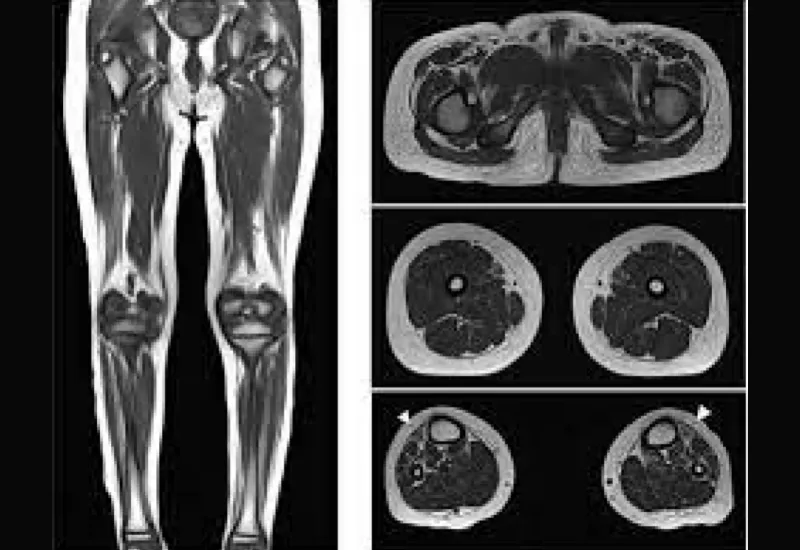Magnetic Resonance Imaging scanning, a revolutionary medical testing technology, utilizes a strong magnet to form pictures of different body organs that orthodox testing methods cannot. This article focuses on lower extremity non-joint MRI, its procedure, cost, and importance. Let's delve in!
What is a Lower Extremity Non-Joint MRI?
An MRI scan of the lower extremity captures images of the lower portions of the body, including legs, foot, and surrounding tissues, by using strong magnets. A leg MRI, however, may also include the knee and ankle.
An MRI scanning procedure does not use any kind of ionizing radiation or X-rays. A single MRI image is known as a slice, and one MRI exam produces several slices that can then be stored on a computer or printed.
How is an MRI of the lower extremity performed?
Lower extremity MRI is a non-invasive and non-painful medical procedure. Individuals to be tested are required to remove any metal objects that they might have on them. These include metal-containing underwear, piercings, jewelry, metal zippers, credit cards, watches, pins, hairpins, wallets, hearing aids, or any other accessories as they may distort the images.
It is also essential to inform your lab technician if you have any metal objects inside your body, such as dentures or metal stents. Removable dentures must be taken out before the exam.
Individuals to be tested are also asked to wear a hospital gown to avoid unprecedented situations. In an MRI with contrast, lab technicians administer a dye solution intravenously to individuals to be tested. This dye aids radiologists in monitoring different body areas clearly. However, it is vital to inform the radiologist if you are allergic to any medicines or substances. In other kinds of MRIs, the dye may be administered to a joint.
Patients are then asked to lay down on a narrow table that slides into a tunnel-like scanner called the MRI machine. An MRI test lasts about 30-60 minutes, but may take longer depending upon an individual's medical conditions. It is usual for the MRI machine to make certain buzzing, ticking, or thumping noises while working. You can wear headphones to block these noises out, and even play music in them. MRI rooms also have an intercom that allows you to speak to someone at any time. Similarly, some MRI rooms also have televisions and special headphones for patients to help pass the time.
If you are claustrophobic, you should inform the lab technician so that they can give you a mild sedative before the test to reduce anxiety or make you sleepy. Your lab technician may also suggest an "open MRI" where the machine is a little distant from the body.
How to prepare for a lower extremity non-joint MRI test
Patients to be tested are typically asked to avoid eating and drinking about 4-6 hours before the process. It is also vital to tell your lab technician if you have a heart defibrillator or pacemaker, recent surgical procedure with screws and metal plates, particular types of vascular stents, inner ear or cochlear implants, particular kinds of artificial heart valves, brain aneurysm clips, or sheet metal in eyes or other body parts.
Patients can typically return to their original lifestyle, activity, and medications after a test, as there is no recovery time for an MRI scan.
Why is a lower extremity non-joint MRI scan performed?
A lower extremity MRI scan captures detailed images of parts of the leg and feet that cannot be looked at through orthodox scanning methods such as CT scans or X-ray imaging. It may be prescribed to look into the following details:
-
Pain in the femur, fibula, tibia, or bones of the feet
-
Abnormal mass that can be visualized on a physical exam
-
Abnormal findings in X-rays or bone scan
-
Leg pain that shows no signs of improvement even upon treatment
-
Congenital disabilities of the leg or foot
-
Pain, redness, or swelling in a leg
-
Leg pain, fever, or a history of cancer
-
Instability of the foot
How much does a lower extremity non-joint MRI cost?
The national estimated average price for a lower extremity non-joint MRI is $1,390. Several factors affect the price of an MRI scan, such as the location and place of testing. Hospitals typically charge more than standalone health clinics because of the overhead costs.
If you want to get a lower extremity MRI done, Cura4U is the right choice. Cura4U offers specialized MRI scans for as low as $60 and several exceptional discounts. By becoming a part of the Cura4U family, you can get a lower extremity non-joint MRI scan both with and without contrast for as low as $500 in Florida. Head over to Cura4U to know more about the pricing in your locality!












